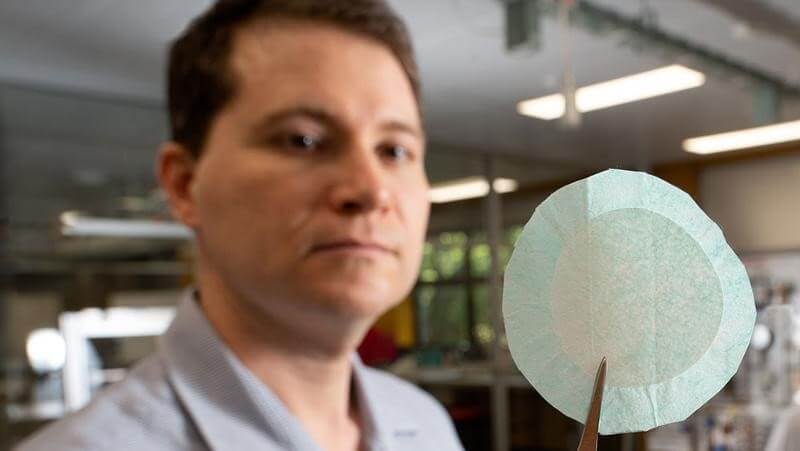
A new company, CelluAir, will bring the world-first, virus-filtering mask material made from agriculture waste to market. The material was developed by QUT process engineer Dr Thomas Rainey and his research team.
The material, which can filter nanoparticles smaller than the coronavirus, will be fast-tracked into production after proof of concept testing found it could filter nanoparticles smaller than 100 nanometres, the size of a virus, while retaining high breathability which reduces wearer fatigue.
A joint venture between QUT and Innovyz
CelluAir, a start-up managed by Australian commercialisation company Innovyz, signed a licence agreement and a shareholders’ agreement with QUT on Friday. CelluAir will begin an accelerated six-week scope of work to scale up the technology to bring it to market as soon as possible.
Innovyz is known for having incubated many advanced manufacturing start-ups from research including listing Amaero (3DA) from Monash University, and Titomic (TTT) from CSIRO on the Australian Stock Exchange in 2019 and 2017 respectively.
Cheap to produce and biodegradable
“The new material is relatively cheap to produce and is biodegradable making it sustainable for single use,” Dr Rainey, from QUT Science and Engineering Faculty’s School of Mechanical, Medical and Process Engineering, said.
“Our tests showed the new material was more breathable than commercial face masks, including surgical masks.
“Breathability is the pressure or effort the wearer has to use to breathe through the mask. The higher the breathability the greater the comfort and reduction in fatigue.
“This is an important factor for people who have to wear masks for long periods or those with existing respiratory conditions.”
Innovyz general manager Tom Kenyon said the company specialised in taking research from the laboratory and moving to market.
“We’re super excited to be working with QUT which has a great reputation in research and are very focussed on commercial outcomes.
“Many researchers want their research to have impact and the quickest way to have impact is to bring that research to market.”
